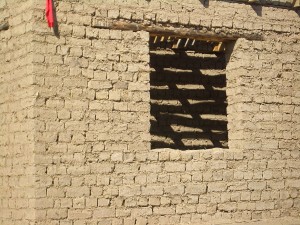By Tommy Hauver, Claire Mathon and Michael Tan
Before the Cultural Revolution, some of these Chinese villages might have seemed picturesque form a distance. With few villages remotely near by, even the market area being miles away, villages seemed quaint, especially the ones that were pressed up against the mountainside, with a stream that might run near by. Although, at a closer range, it might not be as picturesque as one may think. With “roads”, if they can even be called roads, are made completely of dirt, so when it rains the roads are slippery and flooded. Then there are the houses. Only using brick for small sections of their foundation, the people in the villages, ranging around one thousand citizens for some villages, built the houses mostly of plastered mud. Because of the little brick for foundation, and being made mostly out of the plastered mud, the houses turned out to be very steep-peaked and narrow. This resulted in the houses breaking down, as well as reeking of rotting plants and meats that were kept in the houses with the families. (Anita Chan, Chen Village, pg 13)
See also:
Village Farming and Food Before Cultural Revolution
Urbanization: Chinese Cultural Revolution
Urbanization of Chinese Villages After Cultural Revolution
Bibliography
Chan, Anita, Richard Madsen, Jonathan Unger, and Anita Chan. 2009. Chen Village: revolution to globalization. Berkeley: University of California Press.
Menkov, Vladimir, “Milyanfan adobe brick house”, Own Work, 2007, Wikimedia Commons, the free media repository, http://upload.wikimedia.org/wikipedia/commons/5/51/Milyanfan-adobe-brick-house-8039.jpg

